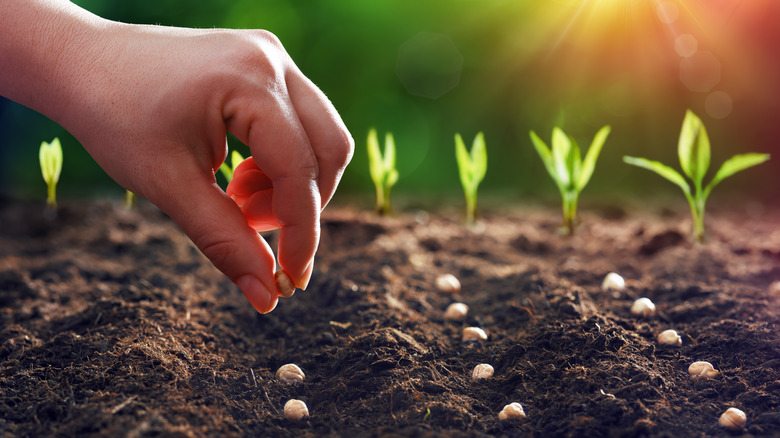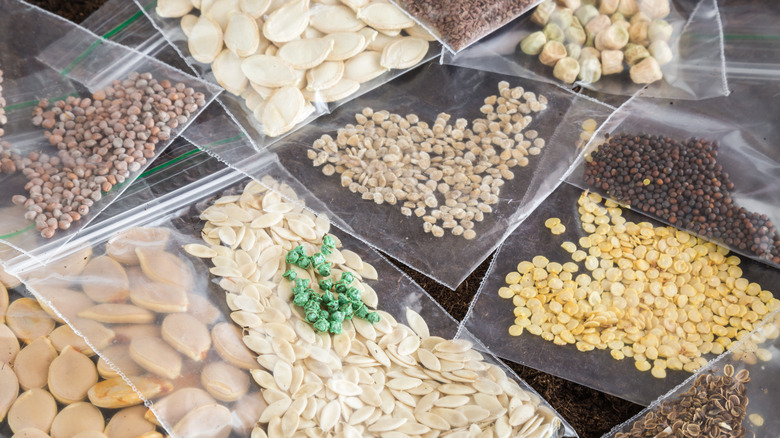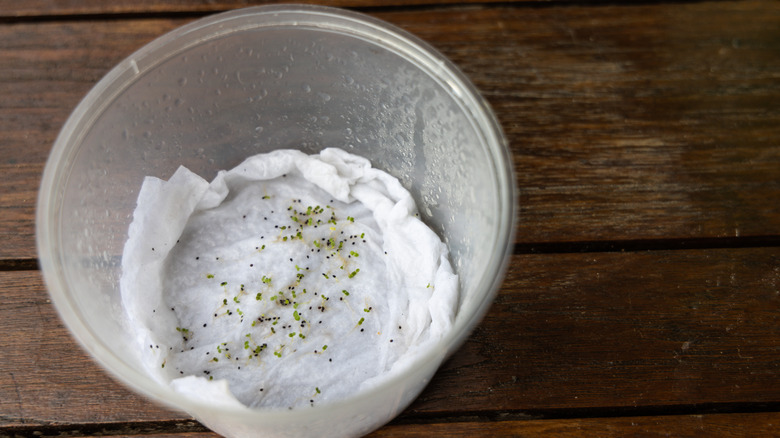What Is Seed Stratification?
Plant seeds go through a natural cycle without human intervention that allows them to detach themselves from the parent plant, weather through the winter, and germinate in the spring. The winter season is especially important because it keeps the seeds from prematurely germinating, per the University of Illinois Extension. They endure specific conditions that break down their hard seed coat, which eventually helps the embryo begin its growth. The embryo searches for sun and nutrients by expanding inside the shell until it breaks through, typically showing white roots and, later, a tiny green seedling.
We can mimic this natural process inside our homes with minimal tools and lots of time. Botanical Interests notes that the natural stratification process involves exposing the seed to freezing temperatures, eventually breaking the seed's dormancy. This is what we strive to achieve when starting seeds at home. There are two main types of seed stratification: Dry seed stratification and moist seed stratification. Both versions involve chilling the seeds for a long period. Depending on what kinds of plants you are planning to grow, one method may be more suitable for your seeds.
Cold dry seed stratification
Dry stratification is likely the easiest of the two methods, and it involves little more than a temperature-controlled, dry storage area to keep the seeds cold. To prepare for dry stratification, Prairie Nursery suggests storing your seeds in Ziploc bags or another rodent-proof container. Alternatively, you can simply leave the seeds in their paper seed packet if you aren't worried about rodents getting to them. The seeds shouldn't need to be prepared in any way before this, assuming you're sure all of them are in healthy condition without signs of mold, disease, or damage. Most people place the bags or containers in their refrigerators or an unheated building during the winter months for 30 to 120 days, depending on the species.
Plant species that can benefit from dry stratification include most native prairie species like lavender hyssop, Jack in the Pulpit, butterfly weed, and several Aster species. According to Practical Self Reliance, Althaea species have also performed well using dry seed stratification.
Cold moist seed stratification
Cold moist seed stratification is used much more often than the previous, and there are a few different ways you can do it. As taught by Permaculture Research Institute, "There are six methods of stratification: cold water soaking, refrigeration, fall sowing, winter solstice sowing, outdoor treatment, and snow planting." Cold water soaking is as simple as placing seeds in a container filled with cold water and changing the water daily to wash away germination inhibitors. After two weeks, they will be ready to sow. The refrigeration method is likely the most popular. The process begins by wetting a paper towel and folding the seeds into it. Then, you place the towel inside a plastic bag and label it with the date. Store the seeds in a refrigerator for eight to 12 weeks, and check it regularly for signs of rotting. After three months, they'll be ready to plant. Outdoor treatment is the same as the refrigeration method, but instead, you place it outside where you can take advantage of the cold temperatures. Just be sure that the seeds are not exposed to direct sunlight.
The other three methods, fall sowing, winter solstice sowing, and snow planting, are all the same. For each of them, you put the seeds outside and let them grow through natural stratification. These are best used on varieties that are native to your environment.


